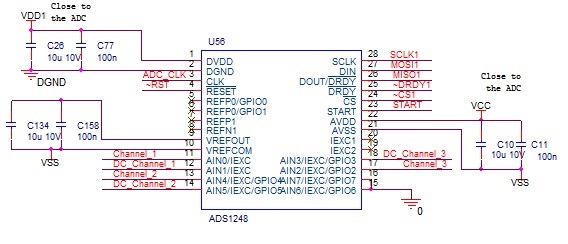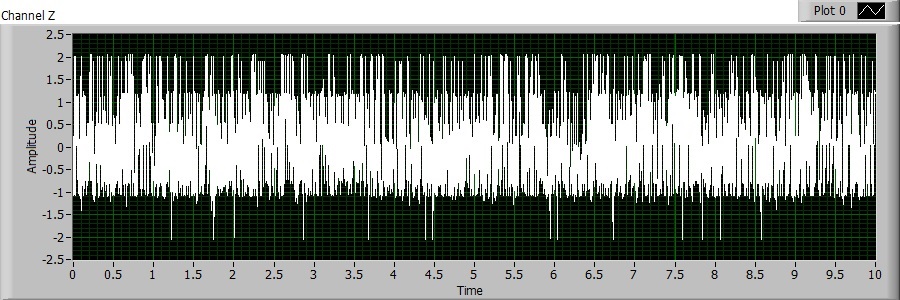Hi
I having problem with series of ADS1248 that used with same code
some works and some has greater gain
the code is using accurate external clock to for timing 900Hz in 2000 samples per second
the pseodo code is as follow
in the start of the code i Initializing
RESETn=0
wait 500us
RESETn=1
wait 50ms
START=1
writeSPI(WREG+MUX0)
writeSPI(3)
writeSPI(P_AIN0+N_AIN6) or writeSPI(P_AIN4+N_AIN6) or writeSPI(P_AIN2+N_AIN6) // change sequentially
writeSPI(0)
writeSPI(0x30)
writeSPI(0x0F) //rate: 2000sps gain: 1
then i reading using RREG to verify writing is good
timer at 900Hz trigger interrupt that:
Start=1
wait 1mSec
CSn=0
writeSPI(WREG+MUX0)
writeSPI(3)
writeSPI(P_AIN0+N_AIN6) or writeSPI(P_AIN4+N_AIN6) or writeSPI(P_AIN2+N_AIN6) // change sequentially
writeSPI(0)
writeSPI(0x30)
writeSPI(0x0F) //rate: 2000sps gain: 1
Start=0
CSn=1
wait for DRDYn to go down
CSn=0
writeSPI(RDATA)
readSPI(result[][2])
readSPI(result[][1])
readSPI(result[][0])
CSn=1
I tried many configurations an my final conclusion is that either you have defected series
(working DXXX, not working CXXX)
both bought from digikey
or I am doing something wrong
please help



